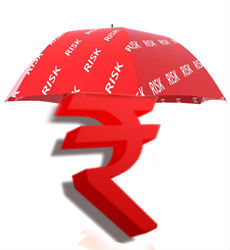
Gohar Group
BANKING & INSURANCE
Banking:
- As per the Reserve Bank of India (RBI), India’s banking sector is sufficiently capitalised and well-regulated. The financial and economic conditions in the country are far superior to any other country in the world. Credit, market and liquidity risk studies suggest that Indian banks are generally resilient and have withstood the global downturn well.
- Indian banking industry has recently witnessed the roll out of innovative banking models like payments and small finance banks. RBI’s new measures may go a long way in helping the restructuring of the domestic banking industry.
- The digital payments system in India has evolved the most among 25 countries with India’s Immediate Payment Service (IMPS) being the only system at level five in the Faster Payments Innovation Index (FPII).* The Indian banking system consists of 12 public sector banks, 22 private sector banks, 46 foreign banks, 56 regional rural banks, 1485 urban cooperative banks and 96,000 rural cooperative banks in addition to cooperative credit institutions As of September 2021, the total number of ATMs in India reached 213,145 out of which 47.5% are in rural and semi urban areas.
- In FY18-FY21, bank assets across sectors increased. Total assets across the banking sector (including public and private sector banks) increased to US$ 2.48 trillion in FY21. In FY21, total assets in the public and private banking sectors were US$ 1,602.65 billion and US$ 878.56 billion, respectively.
- During FY16-FY21, bank credit increased at a CAGR of 0.29%. As of FY21, total credit extended surged to US$ 1,487.60 billion. During FY16-FY21, deposits grew at a CAGR of 12.38% and reached US$ 2.06 trillion by FY21. Bank deposits stood at Rs. 162.41 trillion (US$ 2.17 trillion) as of December 31, 2021.
- According to India Ratings & Research (Ind-Ra), credit growth is expected to hit 10% in 2022-23 which will be a double-digit growth in eight years. According to the RBI, bank credit stood at Rs. 116.8 lakh crore (US$ 1.56 trillion) on 31st December 2021. As of February 2022, credit to non-food industries stood at Rs. 114.10 trillion (US$ 1.53 trillion).
Insurance:
- The insurance industry of India has 57 insurance companies – 24 are in the life insurance business, while 34 are non-life insurers. Among the life insurers, Life Insurance Corporation (LIC) is the sole public sector company. There are six public sector insurers in the non-life insurance segment.
- In addition to these, there is a sole national re-insurer, namely General Insurance Corporation of India (GIC Re). Other stakeholders in the Indian Insurance market include agents (individual and corporate), brokers, surveyors and third-party administrators servicing health insurance claims.
- The life insurance industry is expected to increase at a CAGR of 5.3% between 2019 and 2023. India’s insurance penetration was pegged at 4.2% in FY21, with life insurance penetration at 3.2% and non-life insurance penetration at 1.0%. In terms of insurance density, India’s overall density stood at US$ 78 in FY21.The life insurance industry is expected to increase at a CAGR of 5.3% between 2019 and 2023. India’s insurance penetration was pegged at 4.2% in FY21, with life insurance penetration at 3.2% and non-life insurance penetration at 1.0%. In terms of insurance density, India’s overall density stood at US$ 78 in FY21.
- Premiums from India’s life insurance industry is expected to reach Rs. 24 lakh crore (US$ 317.98 billion) by FY31.
- In the first half of FY22, the life insurance industry recorded growth rate of 5.8% compared with 0.8% in the same period last year. The gross first year premium of Life insurers increased by 6.94% in 2021-22 (until January 2022) to Rs. 2,27,188 crore (US$ 29.54 billion).
Financial Services:
- India has a diversified financial sector undergoing rapid expansion, both in terms of strong growth of existing financial services firms and new entities entering the market. The sector comprises commercial banks, insurance companies, non-banking financial companies, co-operatives, pension funds, mutual funds and other smaller financial entities. The banking regulator has allowed new entities such as payment banks to be created recently, thereby adding to the type of entities operating in the sector. However, financial sector in India is predominantly a banking sector with commercial banks accounting for more than 64% of the total assets held by the financial system.
- The Government of India has introduced several reforms to liberalise, regulate and enhance this industry. The Government and Reserve Bank of India (RBI) have taken various measures to facilitate easy access to finance for Micro, Small and Medium Enterprises (MSMEs). These measures include launching Credit Guarantee Fund Scheme for MSMEs, issuing guideline to banks regarding collateral requirements and setting up a Micro Units Development and Refinance Agency (MUDRA). With a combined push by Government and private sector, India is undoubtedly one of the world’s most vibrant capital markets.
- of January 2022, AUM managed by the mutual funds industry stood at Rs. 38.89 trillion (US$ 518.15 billion) and the total number of accounts stood at 123.1 million.
- Inflow in India’s mutual fund schemes via systematic investment plan (SIP) increased by 17% to Rs. 1.05 lakh crore (US$ 13.98 billion) in November 2021 as compared to November 2020. Equity mutual funds registered a net inflow of Rs. 22.16 trillion (US$ 294.15 billion) by end of December 2021.
- Another crucial component of India’s financial industry is the insurance industry. Insurance industry has been expanding at a fast pace. The total first-year premium of life insurance companies reached US$ 37.1 billion in FY21. In FY22*, premiums from new businesses of life insurance companies in India stood at US$ 17.6 billion. In the first 10 months of FY22, Non-life insurance sector premiums reached at Rs. 1.82 lakh crore (US$ 24.18 billion
AECL & TECI range of services are further elaborated under the head Our services.







